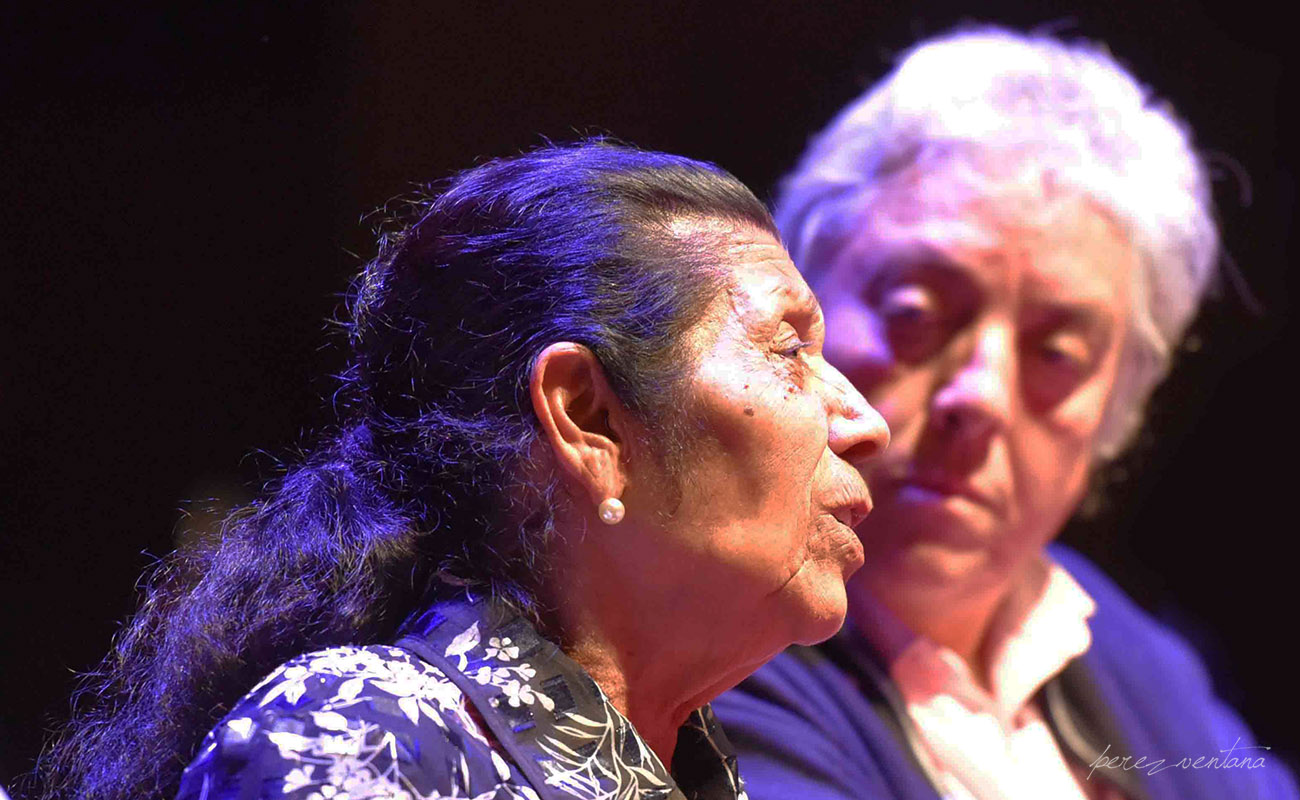Riding the bus with Angelita Vargas: «My footwork is like I’m stepping on my sorrows»
Ángela Vargas Vega (Seville, 1946 — Bormujos, 2023) was one of the greatest bailaoras in the history of flamenco, being one of the few who preserved the hallmarks of the Gypsy baile from Triana’s Cava Nueva district. Here are some the thoughts she shared with me in our way to Mont de Marsan

I do not remember what year it was, exactly, but we were riding the bus from Bilbao in northern Spain to Mont de Marsan, in France, to attend for several days that city’s celebrated flamenco festival. Angelita was seated right next to me, and we talked for at least two hours and a half. I did not tape the conversation because I would never do this without the permission of the artist, and perhaps because of this that great bailaora from Triana spoke her mind to me like no other artist had even done before. “Manolo, son, in my baile there are things that no one sees, but that I feel: the hardships and sufferings of childhood, the beautiful dreams, and the nightmares”, she said.
Something similar was said one day by Tomás Pavón to a very young Juanito Valderrama: “Juanito, son, they shout ‘Olé’ when I sing, as if it were a party. But when I sing my soul comes out of my mouth, with all the sorrows and hardships…”. Whenever she danced, Angelita was like a time machine, showing us how her life had been, at a time when the Gypsy were zealous with their flamenco intimacy. While the concept of the “hermetic era” in flamenco was made up by Mairena and Molina, it is true that it was not easy to come to their homes in the buildings where the Gypsy lived in Triana, to listen to their singing or to watch their ancestral bailes.
«Manolo, son, in my baile there are things that no one sees, but that I feel: the hardships and sufferings of childhood, the beautiful dreams, and the nightmares — Angelita Vargas told me.»
That day I noted the suffering in Angelita’s words, the pain of the bad memories, the harshness of her life. “I do no understand when a bailaora dances showing her teeth, Manuel, as if she were in a circus. When dancing tanguillos it is fine, but when dancing a soleá or a seguiriya, not at all”. Manolito el de María said once that he sang they way he sang because he “remembered the life he lived”. Does the life of an artist make a difference in the way they perform? Angelita had no doubts: “My footwork is like I’m stepping on my sorrows, as if I wanted to kill everything that hurt me or hurt my loved ones”.
I will not publish everything that Angelita told me, and certainly not all she told me about colleagues or businessmen. She did no say anything bad about anyone, but she felt hurt about many things. She did not understand, for example, why the greatest artists sometimes would endure hardships because they strived to preserve the purity of their cante or baile, as if it were a punishment. “It does not make sense that artists today endure hardships, because nowadays there is money for everything. I get that [flamenco artists from the old days like] La Macarrona, Fernanda Antúnez or Manolito el de María lived in poverty. But myself, and some of my colleagues, it’s not right”
We arrived at Mont the Marsan and Angelita got out of the bus very tired, but we enjoyed our long conversation. When I got to the hotel, I wrote down everything we talked about, so I would never forget her words, all she told me about Matilde, Pulpón, Farruco, Manuela, Miguel Acal… All spoken with her renowned sincerity and freshness, that of a woman who was, above all, a great person. As a bailaora, I have nothing new to say. She was Baile with capital B.
Image above: Angelita Vargas and Manuel Bohórquez, Tacón Flamenco de Utrera, February 2019. Photo by perezventana
Translated by P. Young




